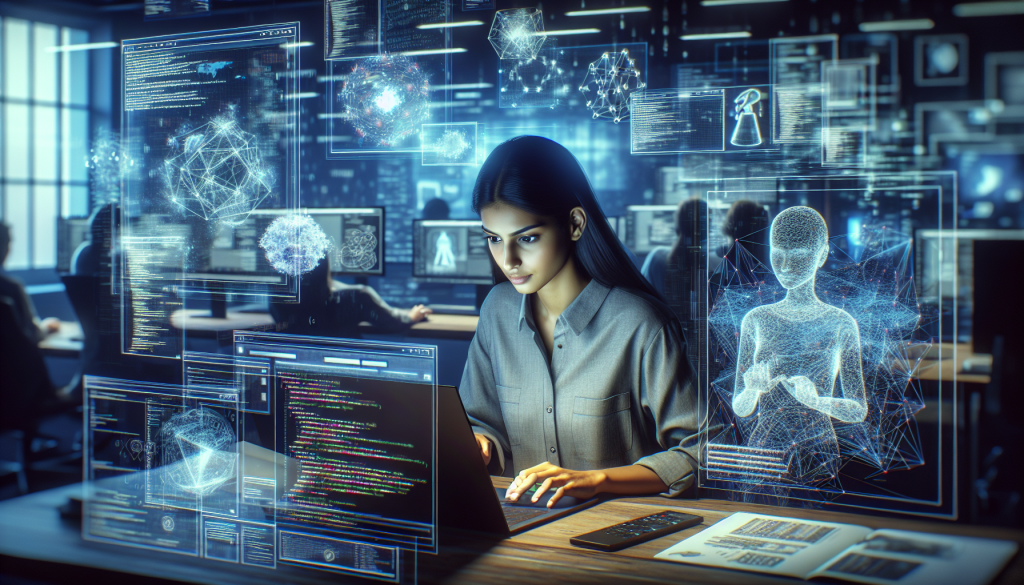
In the ever-evolving landscape of software development, staying ahead requires not just skill and knowledge but also creativity and innovation. Today, generative AI is playing a crucial role in transforming how developers approach their work by unlocking new avenues for creativity. This powerful technology is reshaping the way developers design, develop, and deploy software, offering a fresh perspective on what is possible.
Generative AI refers to a class of artificial intelligence models designed to generate new content. Unlike traditional AI models that might analyze data and predict outcomes, generative AI models create. These models are capable of producing anything from text, code, and images to music and videos. This ability to generate new content holds immense potential for developers, allowing them to automate mundane tasks, explore new ideas rapidly, and even enhance their creative processes.
Generative AI tools are already being integrated into development environments, providing substantial benefits that enhance productivity and foster creativity. Platforms such as GitHub Copilot and OpenAI’s ChatGPT illustrate how AI can assist developers by suggesting code snippets, automating repetitive tasks, and providing context-aware recommendations. This support can result in faster development cycles and, importantly, more space for creative problem-solving and idea exploration.
One of the most significant advantages is the ability to iterate quickly. Generative AI can produce multiple versions of a function or a design, allowing developers to experiment with different approaches without the time-consuming process of manual coding. This rapid iteration accelerates creativity by freeing developers from constraints and enabling them to push boundaries that were previously limited by time and resource constraints.
At its core, generative AI is a tool that augments human creativity rather than replacing it. By handling repetitive and predictable parts of programming, generative AI allows developers to focus on higher-order thinking and innovation. This technology encourages developers to think beyond conventional methods and experiment with new ideas, as they can rely on AI to help manage the details.
For instance, in UI/UX design, generative AI can produce various prototypes based on initial sketches, giving designers the freedom to explore a broader range of aesthetics and functionalities.
With great power comes great responsibility. Developers must understand the ethical implications and potential biases inherent in AI models. Courses and learning paths, such as those provided by platforms like Google Cloud and IBM Developer, emphasize the importance of responsible AI use. These courses teach developers how to identify and mitigate biases, ensuring that their AI-generated content is fair, ethical, and inclusive.
It’s also crucial for developers to ensure transparency in AI applications. Users should be aware when they are interacting with AI-generated content or automated systems. By promoting responsible AI practices, developers not only enhance their own projects but help build trust in AI technologies as a whole.
Generative AI is also a powerful tool in bridging skills gaps among developers. By providing real-time feedback and suggestions, it offers an educational companion that can guide less-experienced developers as they code. This functionality is particularly beneficial in complex areas such as machine learning, where there is a steep learning curve.
Specialized courses on platforms like Coursera offer developers the chance to deepen their understanding of how to leverage generative AI effectively. These courses are designed to demonstrate practical applications of AI, from generating code to automating testing and deployment, ultimately enhancing developers’ skill sets and opening doors to new opportunities.
As generative AI continues to evolve, its role in the software development lifecycle will only grow. With technological giants such as Google and NVIDIA driving innovation in this space, developers can expect increasingly sophisticated tools and models that will further enhance their creativity and efficiency.
Moreover, as these technologies become more accessible, we will likely see a democratization of creativity within the development community. Developers from all backgrounds will be able to leverage AI to contribute innovative solutions to global challenges, shaping a future where creativity and technology go hand in hand.
In conclusion, generative AI is not just a tool for the present but a catalyst for future innovation. By embracing this technology, developers can unlock a new level of creativity, transforming their approaches and outcomes in software development. As the field grows, fostering a responsible and ethical use of AI will ensure that this creative potential is realized for the benefit of all.